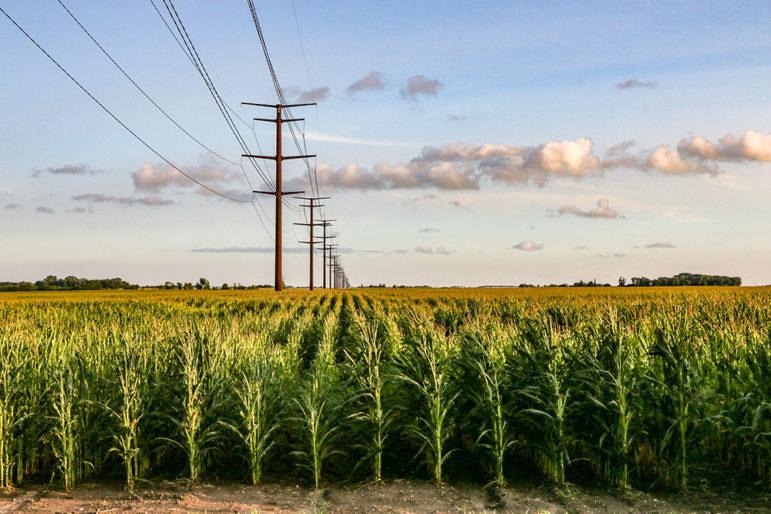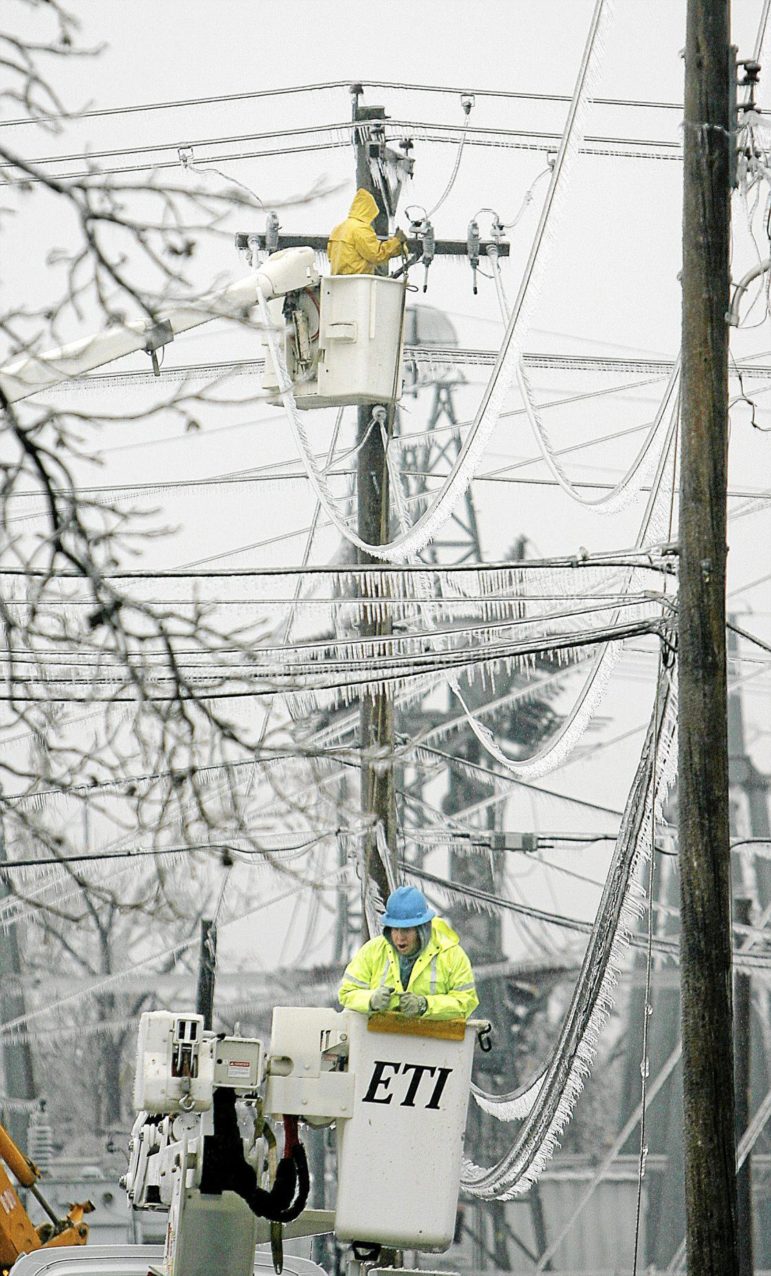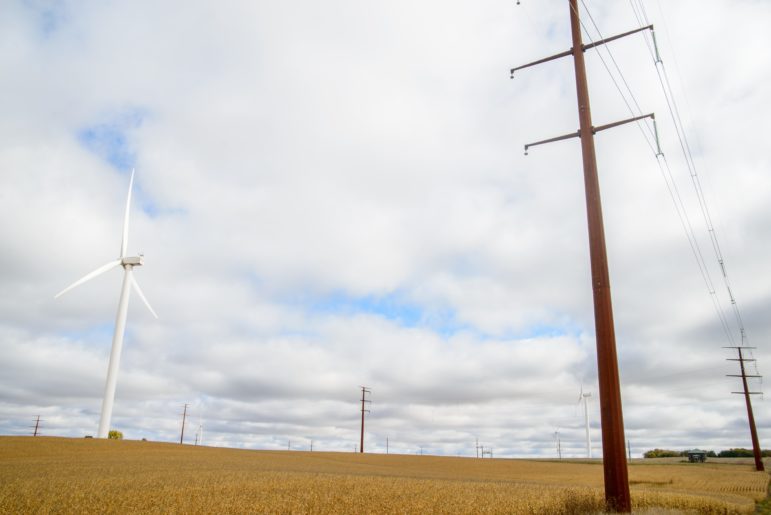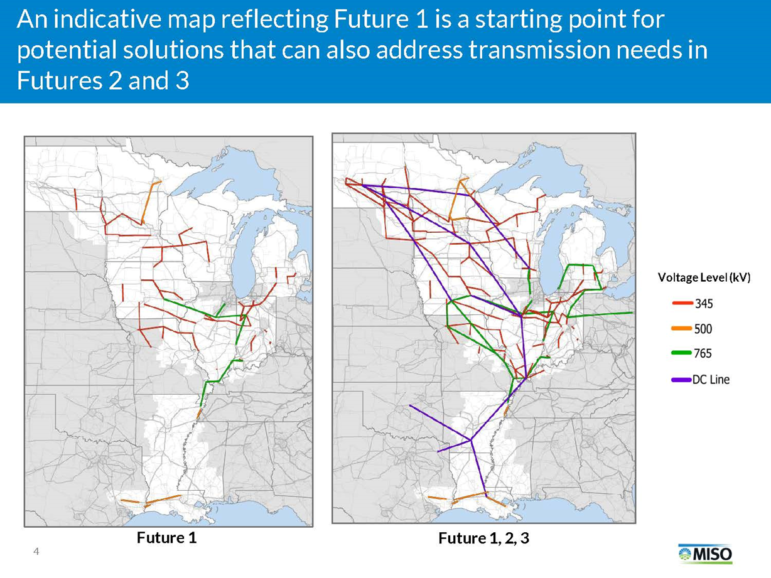
At Fresh Energy, we are working to ensure Minnesota builds a future-proof electric grid that can handle extreme weather, increased demand from beneficial electrification, and a highly renewable electricity supply. Some key aspects of this work happen in collaboration with regional partners at the Midcontinent Independent System Operator (MISO), our region’s electric grid operator, where Fresh Energy is advocating to ensure a stronger and more robust electric transmission grid across the midcontinental U.S.

MISO plays a critical role in decarbonizing our electric system because it is the entity responsible for electric transmission in our region. Minnesotans and everyone in MISO’s energy market need MISO to approve substantial new transmission capacity to integrate and distribute renewable energy across the region and to relieve other reliability issues caused by the grid’s current limitations.
In early June, Governor Walz—together with the governors of Wisconsin, Michigan, and Illinois—sent a letter of encouragement to MISO. Their message applauded and urged on the progress of MISO’s Long Range Transmission Planning (LRTP) effort, which officially began last fall. It followed on the heels of similar public messages from policymakers like New Orleans City Council President Helena Moreno and Michigan State Senator Winnie Brinks.
Can you remind me what MISO does?
In addition to operating the electric transmission grid and managing the wholesale electricity market for a vast footprint that stretches from Manitoba to Mississippi, MISO is tasked with forecasting, and planning for, the region’s transmission future. It is MISO’s job to objectively anticipate what the grid needs to look like in 20+ years, to plan the lines, and to determine how costs will be shared. Along the way, MISO must submit its work to the scrutiny of stakeholders, including organizations like Fresh Energy, soliciting and responding to input at each important step.
Due to the history of market power abuse and poor coordination between different transmission owners, the Federal Energy Regulatory Commission (FERC) created Regional Transmission Organizations (RTOs) like MISO. FERC has encouraged electric companies to join RTOs in an attempt to enable more open, integrated, and efficient grids, so that our energy is as cheap and dependable as possible. Though we do not own transmission or buy and sell in the electricity markets, Fresh Energy participates at MISO as part of a stakeholder group called the Environmental Sector. With our partners from other decarbonization-focused organizations, we participate in MISO meetings, develop proposals, submit feedback, and organize other stakeholders in support of initiatives like LRTP.
But why the sudden upsurge in public interest in MISO, a relatively obscure and wonky organization?
The need for new transmission is urgent. It is driven both by current issues and by what is required to support an evolving future.
Transmission capacity is currently limited. As it stands today, MISO’s transmission capacity is limited in key areas, restricting the ability to transfer electricity. In its report on the February 2021 Arctic Event, which caused emergency load reductions (rolling blackouts) in Arkansas, Louisiana, Illinois, and Texas, MISO concluded that “[t]ransmission is vital to moving electricity from where it is generated to where it is needed most. The MISO region had adequate supply during the Arctic Event, but transmission constraints . . . hindered the ability to move energy to the specific areas where it was needed.” What this means is that even though MISO had enough electricity supply during the crisis, it couldn’t move the energy to where it was needed.

Occurrences of extreme weather events are increasing. With climate change fueling more extreme weather, emergency events are likely to occur more frequently. However, it does not necessarily take an emergency to cause transmission issues. Because the sun shines more in some places and the wind blows better in others—at different times across MISO’s huge geographic spread—plans to add large amounts of low-cost wind and solar also drive the need for more transmission. In the words of MISO CEO John Bear, “if you love renewables, then you have to love transmission.”
There is insufficient transmission capacity for increased renewables. It is also clear from the many canceled wind and solar projects that have dropped out of MISO’s interconnection queue in recent years that MISO has insufficient transmission capacity to accommodate increasing renewables (queue projects are planned generation or storage projects that would like to connect to the MISO grid). These projects, which are predominantly wind and solar, have been canceled because they are required to bear most of the rising costs caused by the lack of transmission capacity: “MISO’s western region has seen nearly all of the 5 gigawatts of renewable energy projects in its queue drop out in the past two years, despite having already secured power-purchase agreements.”
Transmission plays a major role in decarbonization. A growing body of national research also stresses that “expanding the U.S. transmission grid will play a key role in decarbonizing the country’s electricity system.” In its recent Renewable Integration Impact Assessment (RIIA), MISO itself found that it currently has insufficient transmission capacity to supply even 30% of its annual energy demand with renewables, which now serve only ~13% of annual MISO load. RIIA shows that, even with significant storage additions, transmission will be key to reaching moderate to high levels of renewables.
Who should pay for transmission improvements is a major source of disagreement. Because transmission has widespread benefits for users of the grid, many feel it is unfair that wind and solar companies are required to pay for transmission additions that benefit the whole system through greater reliability and lower costs. Furthermore, the grid upgrades wind and solar projects are asked to pay for would often be unnecessary if more large regional lines were in place. With improved regional transmission planning and cost-sharing, these financial barriers to individual projects could be avoided so that least-cost renewable electricity could come online, and the new transmission would provide more benefits than costs to the whole grid over time.

Transmission projects require significant time to develop and build. Transmission needs are particularly urgent because projects take a long time to build. The last round of major regional transmission planning at MISO was completed a decade ago and due to the long lead times for transmission projects and legal proceedings, the last of the 17 lines planned in 2011 is not expected to go into service until 2023. As Jennifer Curran, MISO’s VP of System Planning and Chief Compliance Officer, remarked recently: “In transmission terms, 2035 is like tomorrow.”
MISO is shifting focus to major regional planning. After a decade of transmission planning predominantly focused on local projects to fix relatively minor issues, LRTP is shifting the focus back to major regional planning at MISO. The transmission lines developed through the LRTP process will enable MISO to deliver reliable power supply throughout the energy transition to predominately carbon-free sources. Fresh Energy regularly works to improve MISO planning processes. Last summer, we noted the urgent need for integrated, long-range planning at MISO to deal with the rapidly changing dynamics of our energy system as we transition away from fossil fuels. We were not alone in calling for a fresh approach to planning. MISO launched LRTP in August 2020.
But now that LRTP is underway, why do the Governors still feel the need to encourage MISO?
While MISO is adept at managing stakeholder conversations with and between its 11 diverse stakeholder groups, a major regional planning effort is a mountainous task where emotions can run high—especially when it comes to cost allocation. While most stakeholders seem to understand the urgent need for transmission buildout and support MISO’s efforts, several participants are aggressively advocating against LTRP. By questioning MISO’s legal authority to plan, downplaying the need for transmission, and challenging modeling assumptions that have already been approved through the stakeholder process, they hope to stall or even stop LRTP altogether.

Although the grid is a shared resource that benefits all of us, much of the time at LTRP-focused public meetings has been appropriated by these critics who do not want the effort to succeed and do not want regional lines built. Some are representatives of states without renewable energy goals who are balking at the cost of the transmission updates needed to bring the grid into the future and move away from old, expensive fossil fuel power plants. They argue that states with renewable energy goals should foot the bill. But this would create a “free rider” problem, as many who benefit from the lines would not help pay for them. Customers in states without renewable goals would still benefit from new lines through increased reliability or resilience, increased access to additional generation, or decreased energy costs from more wind and solar, for example. Some stakeholders simply do not want to pay for any regional transmission, regardless of whether it benefits their customers or not. As expected, we are also seeing participation by entrenched fossil fuel interests attempting to hinder more cheap renewables from entering the marketplace.
In a nutshell, MISO is hearing much from those aiming to stall or stop LTRP and not enough from the project’s many supporters. So, as Governors Walz, Whitmer, Pritzker and Evers recognized in their letter this week, MISO deserves our kudos and support during its continued hard work on this ambitious and critical project. As the Governors stated: “[s]imply put, we cannot allow the transmission system to become a barrier to meeting our climate commitments, nor can we sacrifice system-level reliability as the number of extreme weather events driven by climate change continues to increase.”
As it endeavors to defend its title as “the most reliable, value-creating RTO,” MISO will need the support of stakeholders like Fresh Energy and our partners to ensure that LRTP moves forward based on the best available data and practices. By the end of this year or early 2022, we hope to report to you that some LRTP transmission projects are approved and headed toward construction. Stay tuned!
